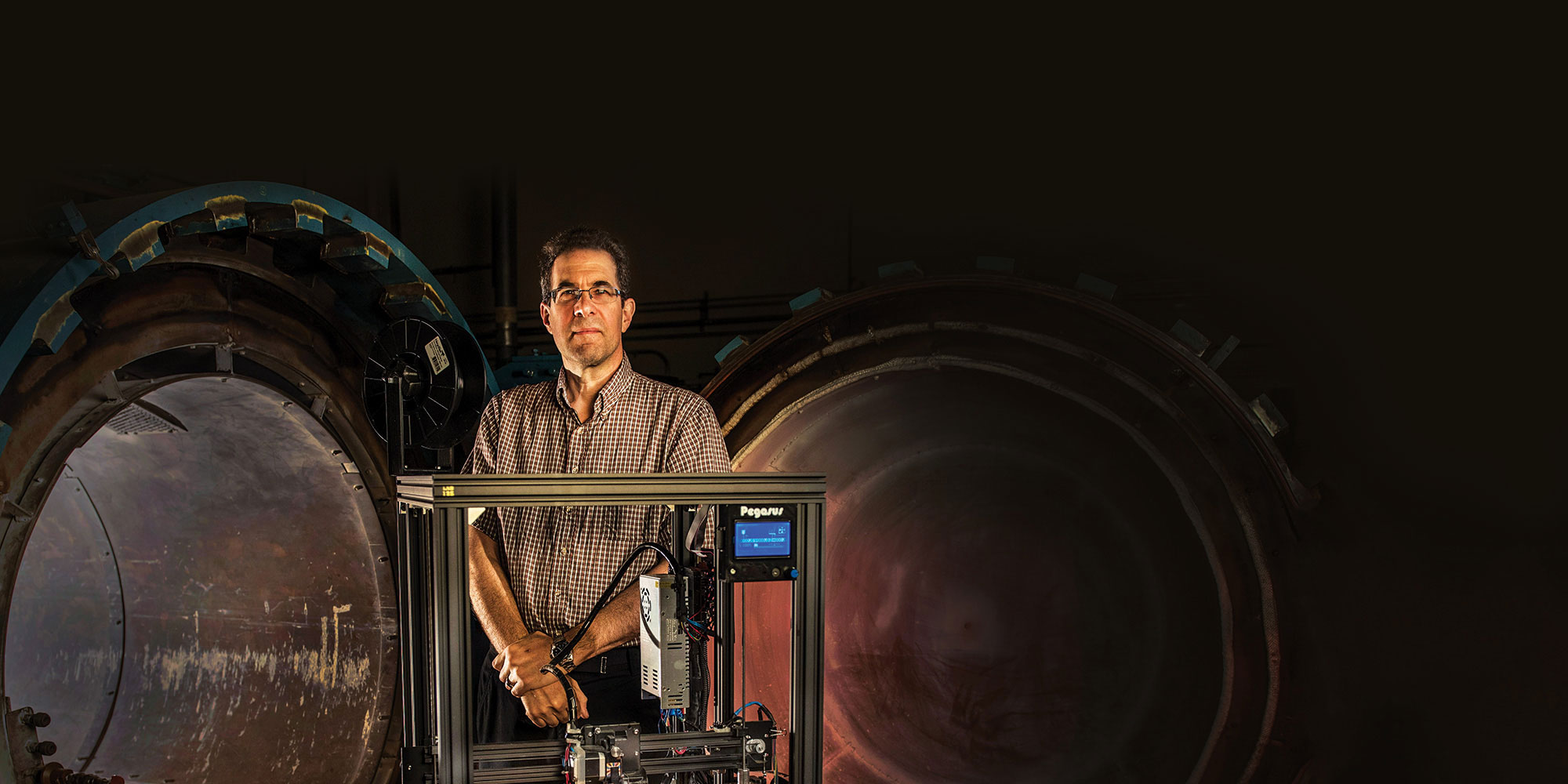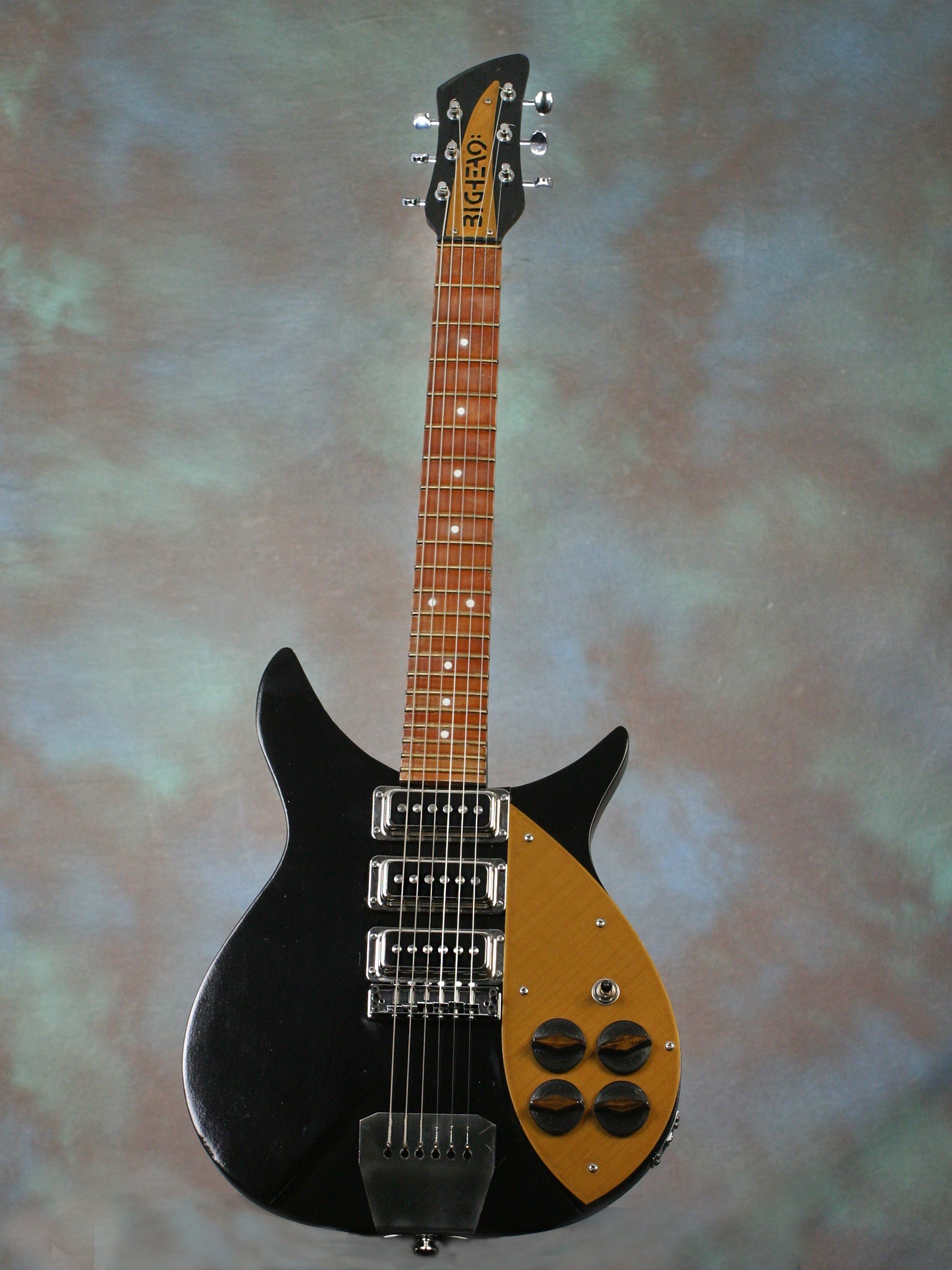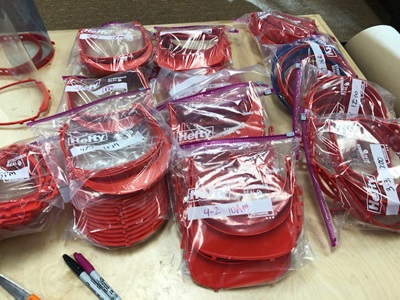3D Fiber Printing Invention
Patented Success in Additive Manufacturing


By Kelly McSweeney
Creativity comes from many sources, including socializing, problem solving and play. The concept for 3D fiber printing emerged from a group of Northrop Grumman engineers/musicians seeking to 3D print a guitar for their company rock band “Lab 125.” The plastic, however, wasn't strong enough to support the load on the guitar neck from the strings, so they brainstormed to devise a way to add fiber reinforcing to a 3D printer to make a stronger guitar.
“The light bulb went off and we realized this will work in aircraft and other types of structural parts," said Jerry Nardiello, materials and process engineer. Nardiello teamed up with Robert Christ, John Crawford and John Madsen to take their composite 3D printing process from concept to prototype.
In January 2019, the U.S. Patent and Trade Office granted patent 10,173,410 for the innovative technology that ejects fiber and resin simultaneously from one 3D printer’s nozzle.
Strengthening 3D Printing for Aircraft Components
One of the more common methods of additive manufacturing methods engineers use is a method called thermoplastic extrusion 3D printing in which melted plastic expresses through a nozzle to create a three-dimensional shape. Although this produces objects rapidly, the plastic alone isn't strong enough for structural parts such as aircraft components—or the neck of a guitar. To strengthen plastic, engineers often add fiber reinforcement to secure the fiber while it carries the load and structure. But composites are expensive to build because the normal manufacturing process is time-consuming and labor-intensive. The solution: carbon fiber reinforced 3D printing.
"This is a way to try to automatically get the fibers and the resin together and try to build a near-net shape structure as opposed to trying to lay it up and build it with plies," said Madsen, a research engineer.
Expelling Fiber and Plastic in 3D Printing
As a solution, the Northrop Grumman team developed a special nozzle that can be used on a conventional machine with minor modifications. With resin surrounding the fiber, both plastic and carbon fibers come out of a single head simultaneously. Engineers can use several types of high-strength fiber such as carbon fiber, fiberglass, polyester, Kevlar or nylon.
This innovative method is easier to control, has a simpler machine, and the beads of material that come out are perfectly in sync, eliminating wrinkles in the final product.
The concept is simple, but implementation is challenging because materials for aircraft require extensive testing. The next step for the team is qualifying the materials for flight use through testing tens of thousands of small sample parts called “test coupons.” Engineers stretch the coupons on specialized testing machines, and measure the elasticity and measure when they fail.
3D Carbon Fiber Printing is New Technology for Use on Earth and in Space
"We hope this technology will make us more competitive in our bids for future aircraft by being able to have a unique offering of the 3D composite part made by additive manufacturing, completely reinforced with fibers," said Madsen.
Engineers could use carbon fiber reinforced 3D printing to quickly build low-cost, lightweight, composite parts using an automated, digitally-run machine. It's ideal for situations when there’s a need for a low volume of something with high quality without time for conventional tooling. For example, users could quickly manufacture a piece of ground support equipment or aircraft parts such as linkages, brackets, bearings or cockpit panels. Also, 3D print composite parts could be printed for supporting structures in hydraulic systems and electrical systems. It would also be useful for quickly replacing small parts on an aircraft's exterior that wear out often, such as boundary layer dams, vortex generators and other small aerodynamic enhancements.
“The sky really is the limit for this technology," said Nardiello. "In time, I think we're going to find more and more applications."
One such example is the potential for this technology to be used in space as a way to build in space because it doesn't require any tooling other than a digital computer model. For instance, when making repairs or building a habitat, astronauts could 3D-print parts compatible with material such as planetary rocks. This could allow them to reuse material in space, potentially reducing launch costs significantly.
The 3D-printed guitar ultimately ended up with a different technology for reinforcement. However, despite not being able to use this technology in the instrument, the Northrop Grumman team invented a solution that will solve many manufacturing challenges.
Related
Read all stories about advanced technology and innovation >>


